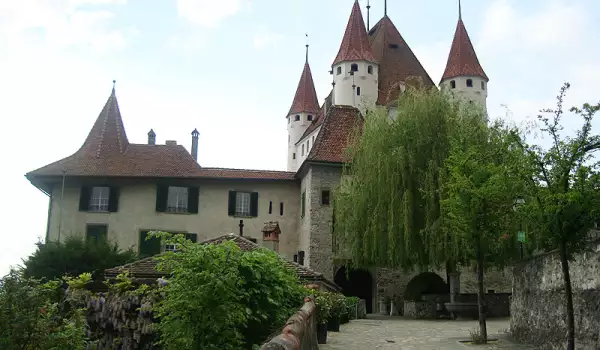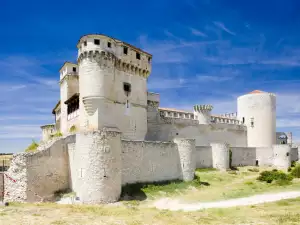Thun Castle

Thun Castle is a major cultural and historical monument of the eponymous Swiss town of Thun. Located on the northwest end of Lake Thunersee, between Interlaken and the Berne canton of Bern, Thun and it’s medieval castle stand 30 km south of the capital Bern. The Swiss town has arisen precisely in the place where the River Aare departs from Lake Thunersee on its long trip, 24 miles to the capital.
Thun itself, is on a main road junction, and is a starting point for the Bern Alps. Thun castle can be reached easily - it is 15 minutes walk from the station of the city. You can see its high and massive dungeon, built by Berchtold V of Zähringen, back in 1195.
Land at the site of today’s Thun was inhabited since the Neolithic era. The name of the town comes from the Celtic "Dunum", meaning "fortified town." Lake Thun is named after the village, and not vice versa. Today, the almost ten century old city palace is turned into an intriguing historical museum of the area whose exposure is spread over 5 floors in the whole tower of the medieval castle. Two castles are interesting to visit - Schloss Oberhofen, with its beautiful gardens and 19th-century castle Schloss Hünegg.
The castle was built by the Dukes of Zähringen shortly before 1200. The basis of the big dungeon are made around 1186 by Berchtold V, which at that time exercised control over the area. To this day Thun Castle retains much of its original architecture since 8 centuries ago.
The dome roof of the tower is decorated in Norman style, with four smaller oval towers from all sides. This architecture is typical of castles in France and in Switzerland and is one of the oldest of its kind, as her beauty is accentuated by the white facades and red roofs.
In 1218 the castle became the property of Earl Dong Kyburg for more than 100 years.

Strife and murder followed, in 1322 Eberhard of Kyburg stabbed his brother and locked him in the tower of the palace. During 1384 Lord Bern Thun converted the castle into his residence. Then the medieval structure is owned and operated today by the city government.
New parts of the palace were added in 1429 and the tower of Dong was turned into a historical museum in 1888. From the top of the castle opens a comprehensive view of the area in the periphery of the giants that stand proudly - Blümlisalp, Jungfrau, Mönch, Eiger and Schreckhorn.
April 17, 2010 Thun castle reopened after lengthy restoration activities with a special exhibition of landscapes painted between 14- 19 century. Thun Castle has an extensive library, which holds important historical books. Throughout the castle, you can see authentic furniture, antique tapestries and furniture from various historical eras.
Exposures of the historical museum of Thun are located on 4 floors, connected by a wooden staircase. Some of the steps date back to the original staircase of the building. Under the Knights' Hall are exhibits of a collection of furniture and paintings, antique toys and dolls, ceramic art, including pieces of ancient Heimberg pottery. There are authentic combat gear sets and the castle has a beautiful lake with a small fountain.















